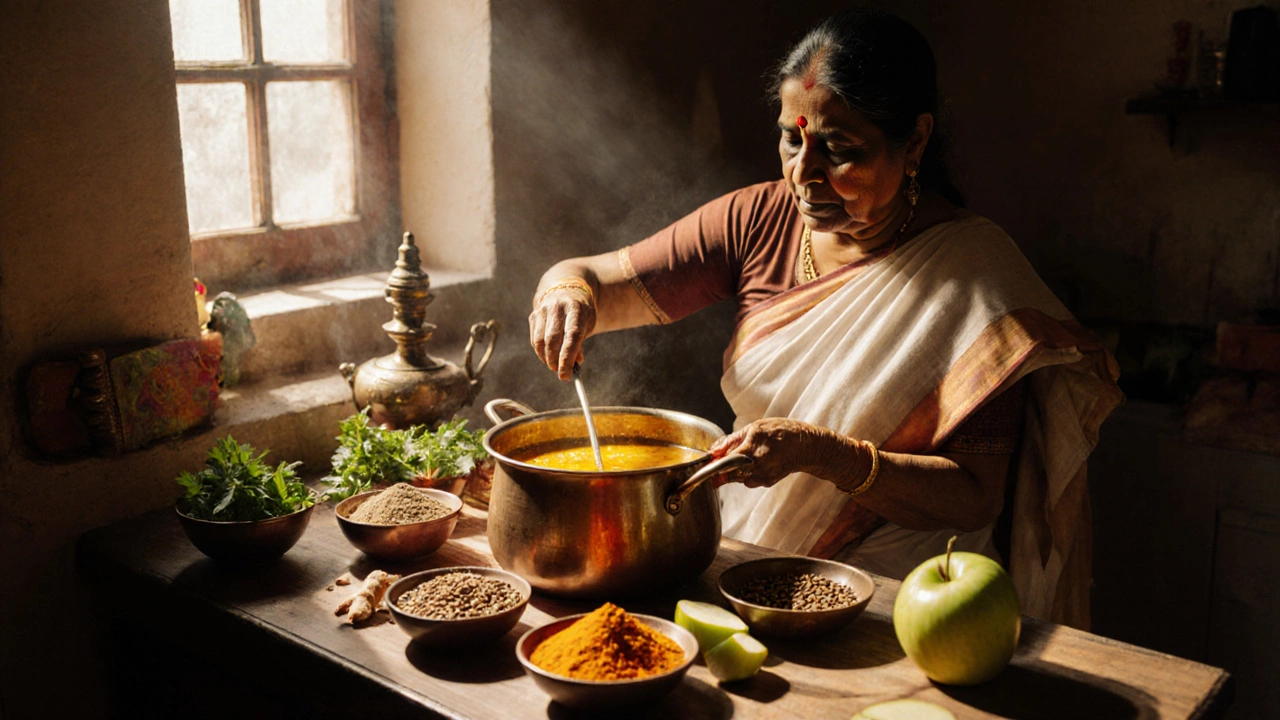Explore how Ayurveda tackles weight loss, the role of doshas, diet, herbs, and lifestyle tweaks, plus evidence and practical tips for real results.
Read MoreAyurvedic Weight Loss: Simple Steps to Lose Fat Naturally
If you’re tired of fad diets that promise quick results but leave you hungry, Ayurveda might be a breath of fresh air. It doesn’t push you to count every calorie; instead, it tells you how to work with your body’s natural rhythm. Below you’ll find practical tips you can start using today, no matter which dosha you belong to.
Understand Your Dosha
First things first – know your dominant dosha. Vata types tend to be light and quick, so they often feel hungry often and need grounding foods. Pitta people are fiery; they can overheat and crave spicy, salty snacks. Kapha bodies are steady and store energy well, which can turn into stubborn weight if they eat too many heavy foods. A quick online quiz or a chat with an Ayurvedic practitioner can give you a clear picture.
Once you know your type, you can pick foods that calm the dominant dosha. For Vata, warm soups, cooked grains and healthy fats keep things stable. Pitta benefits from cool salads, sweet fruits and a bit of dairy. Kapha does best with light stews, bitter greens and plenty of spices that rev up metabolism.
Everyday Practices for Weight Loss
1. Mindful Meals – Eat at the same times each day and avoid snacking between meals. A regular schedule keeps your digestive fire, called "agni," strong. Try to finish dinner at least three hours before bedtime.
2. Spice It Up – Ginger, cinnamon, black pepper and turmeric not only add flavor but also boost metabolism. A cup of ginger tea after meals or a pinch of cinnamon in your oatmeal can make a difference.
3. Herbal Helpers – Triphala, a blend of three fruits, supports digestion and regular bowel movements. Take it before bed with warm water. Guggul and fenugreek are also known for helping the body burn fat when used correctly.
4. Stay Hydrated – Warm water with a squeeze of lemon first thing in the morning awakens agni. Throughout the day, sip warm herbal teas instead of cold drinks, which can dampen digestion for Vata and Kapha types.
5. Gentle Exercise – Ayurveda suggests movement that feels good, not punishing. Vata benefits from steady walks or yoga, Pitta from swimming or moderate cardio, and Kapha from brisk walking, cycling or dynamic yoga sequences.
6. Quality Sleep – Aim for 7‑8 hours of restful sleep. Poor sleep disrupts hormonal balance and can increase cravings. Create a calming bedtime routine: dim lights, warm milk with a pinch of nutmeg, and avoid screens an hour before bed.
7. Portion Control – Use a smaller plate and fill half of it with non‑starchy vegetables, a quarter with whole grains, and a quarter with lean protein or plant‑based protein. This simple visual cue helps you eat just enough.
8. Detoxify Occasionally – A short, gentle cleanse like a 3‑day warm lemon water fast can reset agni. Always consult a practitioner before starting any cleanse, especially if you have health conditions.
Putting these habits together creates a balanced routine that supports natural weight loss. You don’t need to overhaul your life overnight – start with one or two changes and build from there. Over time, you’ll notice steadier energy, fewer cravings, and a slimmer waist without the yo‑yo effect of crash diets.
Remember, Ayurveda is about listening to your body. Adjust the tips to fit your schedule and preferences, and you’ll find a sustainable path to a lighter, healthier you.





